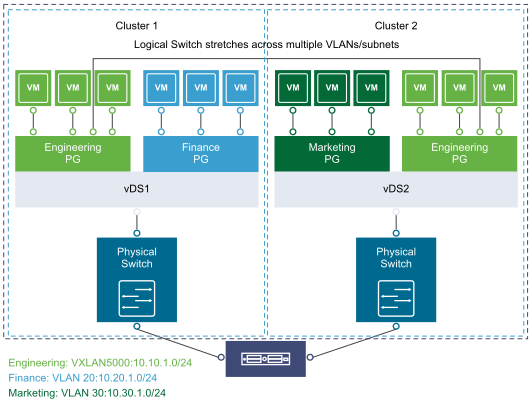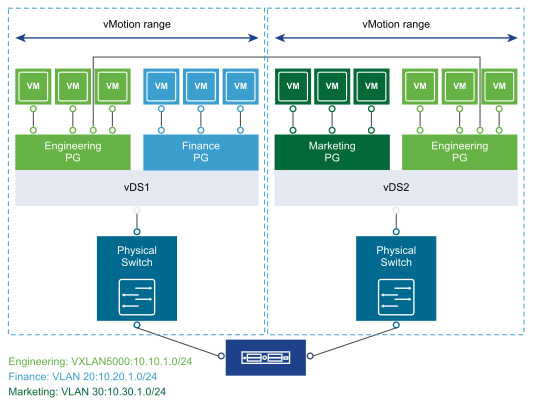This scenario presents a situation where company ACME Enterprise has several ESXi hosts on two clusters in a datacenter, ACME_Datacenter. The Engineering (on port group PG-Engineering) and Finance departments (on port group PG-Finance) are on Cluster1. The Marketing department (PG-Marketing) is on Cluster2. Both clusters are managed by a single vCenter Server.

ACME is running out of compute space on Cluster1 while Cluster2 is under-utilized. The ACME network supervisor asks John Admin (ACME's virtualization administrator) to figure out a way to extend the Engineering department to Cluster2 in a way that virtual machines belonging to Engineering on both clusters can communicate with each other. This would enable ACME to utilize the compute capacity of both clusters by stretching ACME's L2 layer.
If John Admin were to do this the traditional way, he would need to connect the separate VLANs in a special way so that the two clusters can be in the same L2 domain. This might require ACME to buy a new physical device to separate traffic, and lead to issues such as VLAN sprawl, network loops, and administration and management overhead.
John Admin remembers seeing a logical network demo at VMworld, and decides to evaluate NSX. He concludes that building a logical switch across dvSwitch1 and dvSwitch2 will allow him to stretch ACME's L2 layer. Since John can leverage the NSX controller, he will not have to touch ACME's physical infrastructure as NSX works on top of existing IP networks.
Once John Admin builds a logical switch across the two clusters, he can vMotion virtual machines from one cluster to another while keeping them attached to the same logical switch.

Let us walk through the steps that John Admin follows to build a logical network at ACME Enterprise.